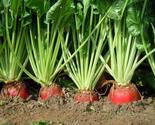No feedback (1 transaction)
Shipping options
Estimated to arrive by Thu, Aug 28th.
Details
This estimate is based on:
- The seller's handling time
- USPS Ground Advantage (1 to 10 business days) transit time to US
Actual delivery times may vary.
Have shipping questions? Contact the seller
FREE via USPS Ground Advantage (1 to 10 business days) to United States
Payment options
PayPal accepted
PayPal Credit accepted
Venmo accepted
PayPal, MasterCard, Visa, Discover, and American Express accepted
Maestro accepted
Amazon Pay accepted
Nuvei accepted
No feedback (1 transaction)
Shipping options
Estimated to arrive by Thu, Aug 28th.
Details
This estimate is based on:
- The seller's handling time
- USPS Ground Advantage (1 to 10 business days) transit time to US
Actual delivery times may vary.
Have shipping questions? Contact the seller
FREE via USPS Ground Advantage (1 to 10 business days) to United States
Payment options
PayPal accepted
PayPal Credit accepted
Venmo accepted
PayPal, MasterCard, Visa, Discover, and American Express accepted
Maestro accepted
Amazon Pay accepted
Nuvei accepted
Item traits
| Category: |
Seeds & Bulbs
|
| Quantity Available: |
10 in stock
|
| Condition: |
New
|
| UPC: |
63941005824
|
| Sunlight: |
Full Sun
|
| Season of Interest: |
Spring
|
| Watering: |
Medium
|
| Country/Region of Manufacture: |
United States
|
| Type: |
Vegetable Seeds
|
| Life Cycle: |
Annual
|
| Features: |
Edible
|
| Indoor/Outdoor: |
Outdoor
|
| Cultivating Difficulty: |
Easy
|
| Climate: |
Humid Continental
|
| Brand: |
Riyadh
|
Listing details
|
Shipping discount:
|
Seller pays shipping for this item.
|
|
Posted for sale:
|
More than a week ago
|
|
Item number:
|
1596925567
|
Mangel Red Beet seeds
Family, genus, and species: Chenopodiaceae Beta vulgaris Synonyms. mangel, mangel-wurzel, wurzel, mangold, field beet, cattle beet, fodder beet.
The fodder beet is native to the temperate zone of Europe, is thought to have originated from a cross between the red and white garden beet, and was likely first cultivated in Germany (Wilson, 1859). Fodder beets were cultivated throughout Europe from at least the mid-1500s primarily as livestock fodder but were also eaten by people, especially during food shortages.
Red Mammoth Mangel Beets produce an massive crop of edible beet leaves and a large root up to 20# or more in size! These beets prefer deeply tilled, free draining, sandy soil to achieve full size. Simply allow your animals to graze on the tops, cut the tops for feeding or harvest the root.
Beet seeds can be planted in early spring or midsummer. Soak seeds overnight in damp towel before planting for excellent germination. Plant beet seeds 1” apart, 1/2" deep, and thin weakest seedlings to desired spacing. Keep soil evenly moist to prevent beet roots from getting woody. For longer harvest, stagger beet plantings every 2-3 weeks.
